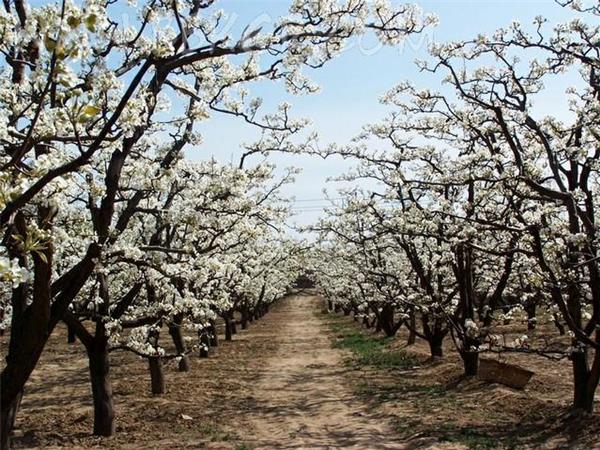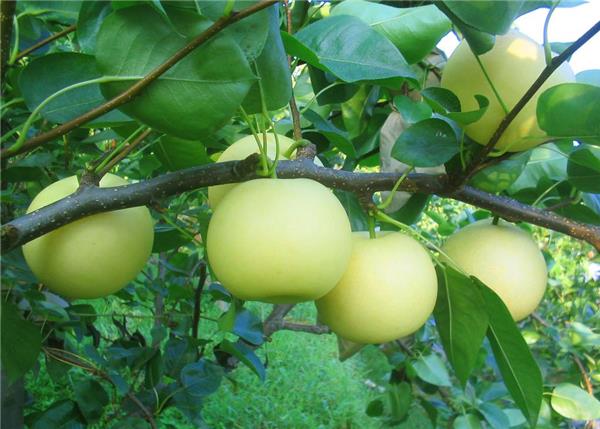What methods should be paid attention to in the planting of pear trees
Pear tree is a very popular fruit tree, because like peach trees, it will not only produce beautiful flowers, but also produce delicious and sweet fruit, and its petals can also be used to make tea. therefore, pear tree is also a kind of tree species with both ornamental value and edible value, with high breeding value.

Characteristics of raising seedlings of Pear trees
The main results are as follows: 1. The seeds were sown from late March to middle and late April after stratification (about 40 cents for 60 days). The sowing rate of Qiuzi pear (Yamanli) is 1.5ml / mu, that of large seeds of du pear is 1.5ml / mu, that of small seeds is 1-l.5 / mu, and that of pear is 0.75lkg / mu. In the case of drought, it can be covered with 22.5 cm of soil, and the soil that is easy to consolidate is thinner and can be covered with grass. The management after sowing is basically the same as that of apple trees.
2. The grafting method is easy to survive by bud grafting or branch grafting. Because the cambium activity of the pear tree stops earlier than the apple, the budding period must be arranged before the apple. Some varieties sprouted earlier in spring, such as Yali pear and ci pear, and the period of branch grafting should also be earlier.
3. The buds and leaf pillows of pears are larger. When budding, the rootstock is required to be thicker, generally more than 0.6 cm. Therefore, when the height of the seedling is about 30 cm, coring should be carried out to promote thickening at the 8 parts of the large leaves.
4. In order to produce more seedlings and good seedlings, we can also use different methods of grafting in different seasons of the year.
5. Pear seedlings must meet the qualified standard before they can come out of the nursery, which requires good joint, integrity of main and lateral roots, more fibrous roots, sturdy seedlings, full buds in the plastic belt, no quarantine pests and so on.

Matters needing attention in Scientific fertilization of Pear trees
1. Do not use a large amount of chicken manure when applying base fertilizer, because chicken manure is too fertile to be used in large quantities. Pig manure is relatively mild and suitable for wide use. Must pay attention to organic fertilizer as the main, chemical fertilizer as the auxiliary. And choose the amount of fertilizer according to the characteristics of the tree: the excellent pear tree applies medium fertilizer, the worst tree applies a small amount of fertilizer, and the medium pear tree applies a lot of fertilizer.
2. Excessive fertilization makes pear trees do not like fruit, the fruit is too large, the pericarp is too thick, taste acid and so on affect fruit sales. Therefore, the amount and area of fertilizer application must be strictly calculated before fertilization. During the fruit expansion period, the total amount of nitrogen, phosphorus and potassium fertilizer per mu should be controlled at 30-35 kg. But in the fruit-setting period, there is no need for such a large amount of fertilizer, controlled at 15-20 kg per mu.
3. When spraying pesticides and fertilizers, you should pay attention to the weather where there is no wind but the air humidity is high. In this way, the sprayed pesticides can be used effectively so that they will not be blown away by the wind or washed into the soil by Rain Water to lose their efficacy.
4. In the process of topdressing, we should pay attention to a small amount of time, and we should not be afraid of trouble. The nitrogen element is the main element of topdressing in the previous times, with the increase of topdressing times, we should pay attention to the application of phosphate fertilizer and potash fertilizer. In this way, the phenomenon of "only growing head, not growing fruit" can be effectively avoided. At the same time, the unnecessary waste of chemical fertilizer is reduced.

Shaping and pruning of pear trees
1. Pruning young trees. Young trees after planting to before beginning to bear fruit. In general, it should be cut lightly, except that the backbone branches, extension branches and auxiliary branches should be moderately short, and the other branches should be retained as far as possible without affecting the growth of backbone branches, so as to facilitate the rapid growth of young trees and the formation of flowers and fruit as soon as possible.
2. Pruning of the first fruit tree. From the fruit to the fruit tree of about 10 years. The pruning task of the tree is to continue to select all levels of backbone branches, continue to expand the crown, and pay attention to the cultivation of fruiting branches, so as to promote early high yield and create favorable conditions for long-term high yield.
3. Pruning in full fruiting period.
4. Pruning aging trees. At the general level of management, fruit trees enter a period of senescence after about 30-35 years. The main purpose of pruning is to renew and rejuvenate, restore the tree potential, prolong the fruiting life as far as possible, and maintain a better yield. The main branches and side branches should be properly retracted and raised according to the degree of weakness; if the middle trunk has been extremely weak and can not be saved, it should be sawed off from the base and change the crown into a happy shape, but pay attention to protect the wound to prevent decay.

In ancient times, some scholars once described such beautiful scenery as "like thousands of trees in full bloom". It can be seen how eye-catching pear trees are when they bloom, so if there are friends who want to plant some trees to decorate the courtyard, priority can be given to planting pear trees.
In ancient times, some scholars once described such beautiful scenery as "like thousands of trees in full bloom". It can be seen how eye-catching pear trees are when they bloom, so if there are friends who want to plant some trees to decorate the courtyard, priority can be given to planting pear trees.
- Prev

[rose planting technique] the method of planting roses in the ground and potted roses
[rose planting technique] the method of planting roses in the ground and potted roses
- Next

[grape anthracnose] harm and control methods of grape anthracnose
[grape anthracnose] harm and control methods of grape anthracnose
Related
- Wuhan Hospital Iron Tree Blooming Result Was Instantly Frightened by the Gardener Master
- Which variety of camellia is the most fragrant and best? Which one do you like best?
- What is the small blue coat, the breeding methods and matters needing attention of the succulent plant
- Dormancy time and maintenance management of succulent plants during dormancy
- Minas succulent how to raise, Minas succulent plant pictures
- What are the varieties of winter succulent plants
- How to raise succulent plants in twelve rolls? let's take a look at some experience of breeding twelve rolls.
- Attention should be paid to water control for succulent plants during dormant period (winter and summer)
- Watering experience of twelve rolls of succulent plants
- Techniques for fertilizing succulent plants. An article will let you know how to fertilize succulent plants.

